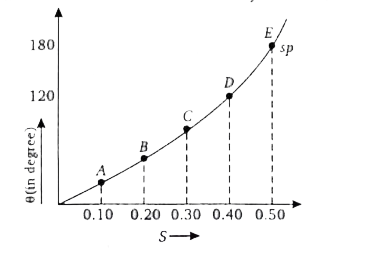The hybrid orbitals that will form the compound are: , , , , , , , Solution in Malayalam
s p^3, s p
s p, s p^2
s p^3, s p^2
s p, s p
The correct Answer is:A
Step by step video, text & image solution for The hybrid orbitals that will form the compound CH_3-C-=C-CH_2-CH_3 are: s p^3, s p, s p, s p^2, s p^3, s p^2, s p, s p by Chemistry experts to help you in doubts & scoring excellent marks in Class 11 exams.
Topper's Solved these Questions
Similar Questions
Justify the position of hydrogen in the periodic table
01:18View SolutionDetermine the oxidation number of the underlilned element in the following:
KMn––––O402:27View SolutionIf S^(*)(p,q) is the dual of the compound statement S(p,q) then S^(*)(sim p,sim q) is equivalent to-
View SolutionWhat are the numbers of nodes present in : (a) 1 s, (b) 2s, (c ) 2 p, (d) 3 p, orbitial s?
05:52View SolutionThe strength of sigma bond formed by s-s, s-p & p-p overlaps are in the order
02:52View Solutionif P,q, r, s ∈ R such that pr=2(q+s) then
View SolutionIf px3+qx2+rx+s=0 is a R.E .of second type then
p=s,q=r
p=-s,q=-r
p=s,q=-r
p=-s ,q=rView Solution
In all expected compounds each central atom only uses its s and p-orbitals in hybridization. The relationship between bond angle 'θ' and decimal fraction of s and p character present in the equivalent orbitals is given by :
cosθ=SS−1=P−1P, S=decimal fraction of s-character in the equivalent hybrid orbital and P=decimal fraction of p-character in the equivalent hybrid orbital.
 .
.
Q. The correct order of % p-character in bond pairs of central atoms in the following compounds is :03:31View SolutionIn all expected compounds each central atom only uses its s and p-orbitals in hybridization. The relationship between bond angle ' theta ' and decimal fraction of s and p character present in the equivalent orbitals is given by : costheta=(S)/(S-1)=(P-1)/(P) , S=decimal fraction of s-character in the equivalent hybrid orbital and P=decimal fraction of p-character in the equivalent hybrid orbital. . Q. If the value n is 2 for compound T, then number of lone pair present at central atom of compound T will be :
04:43View SolutionIf pr.P−1.Ps=(√p3)2andp3/2.pr=ps.p−1/2 then the value of (r+s)(r+s) is :
02:20View SolutionIn Figure, PS=PR, ∠TPS= ∠QPR. Prove that PT=PQ
02:18View Solutionयदि pq=rs,तब (p+qr+s)2=?
04:06View SolutionEvents S and T are independent with P(S)< P(T),P(S∩T)=625 and P(S∣T)+P(T∣S)=1 then P(S) is
03:03View SolutionChoose the electronic configurations that are possible from among the following. Explain why the others are impossible.
a '1 s^2 2 s^3 2 p^6'
b '1s^2 2 s^2 2 p^4'
C '1 s^2 2 s^2 2 p^8 3 s^2 3 p^6 3 d^7'
d '1 s^2 2 s^2 2 p^6 3 s^2 3 d^9'04:06View SolutionElements A, B, C, D and E have the following electronic configuration:
A: 1s22s22p1
B: 1s22s22p63s23p1
C : 1s22s22p63s23p3
D : 1s22s22p63s23p5
which among these will belong to the same group in the periodic table?02:44View Solution
